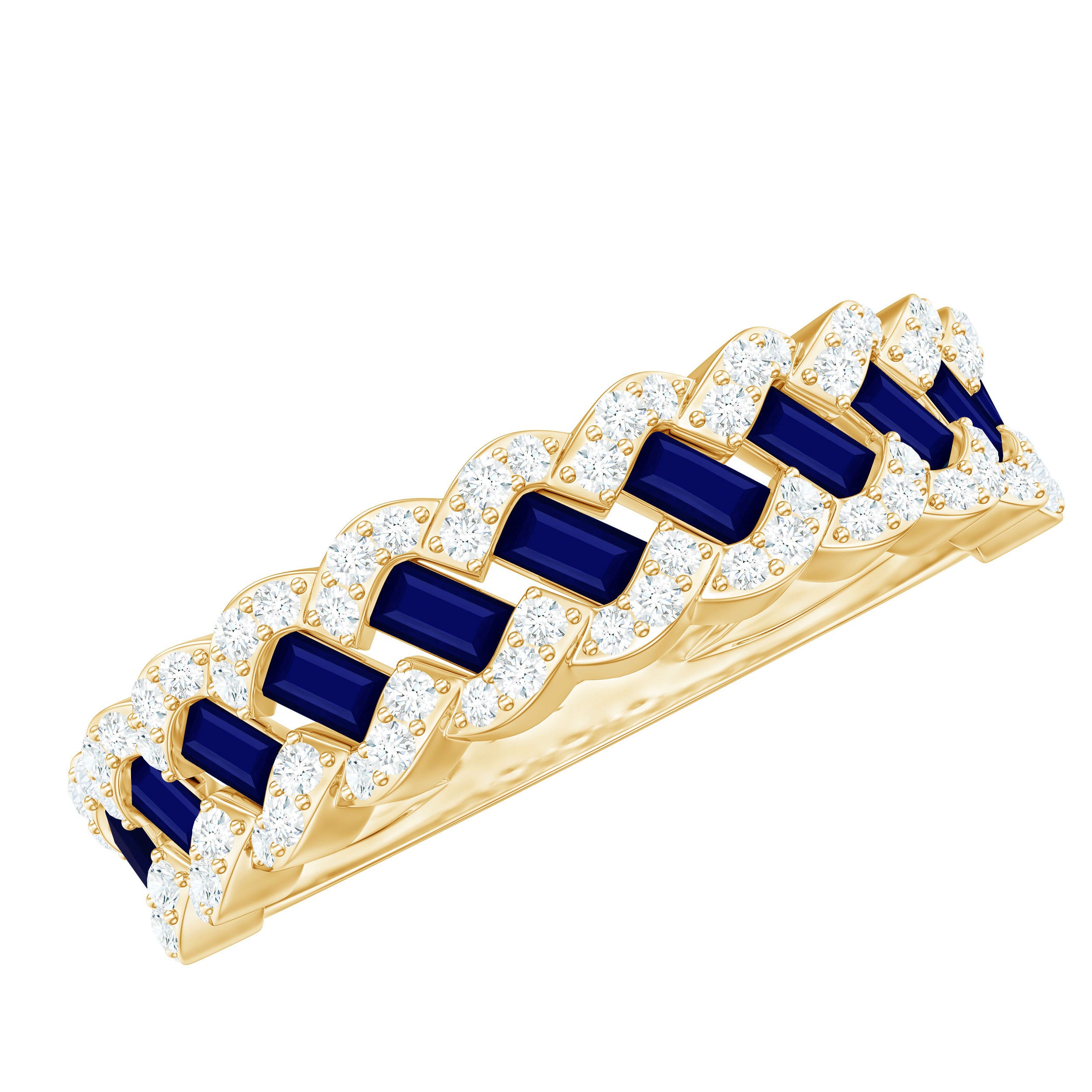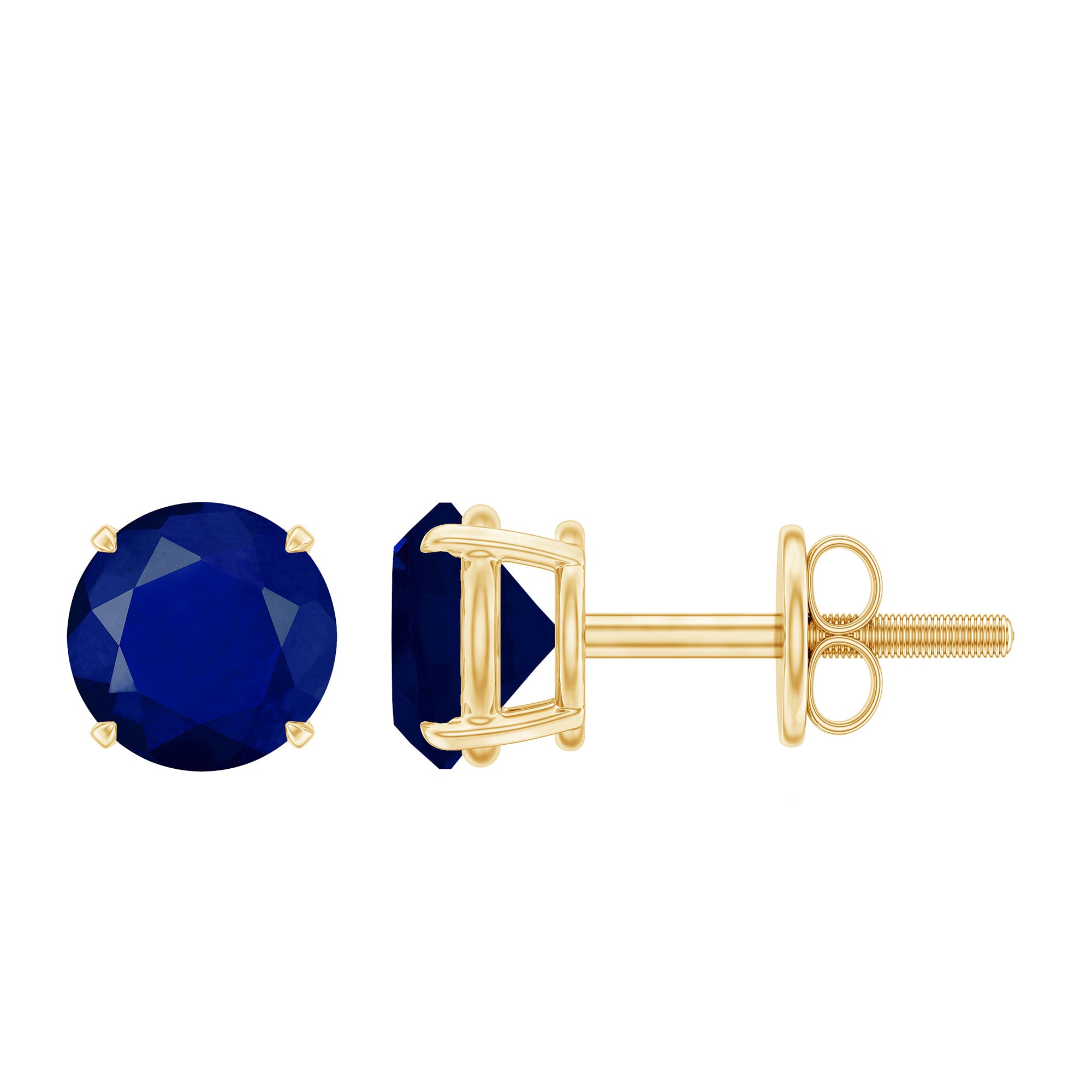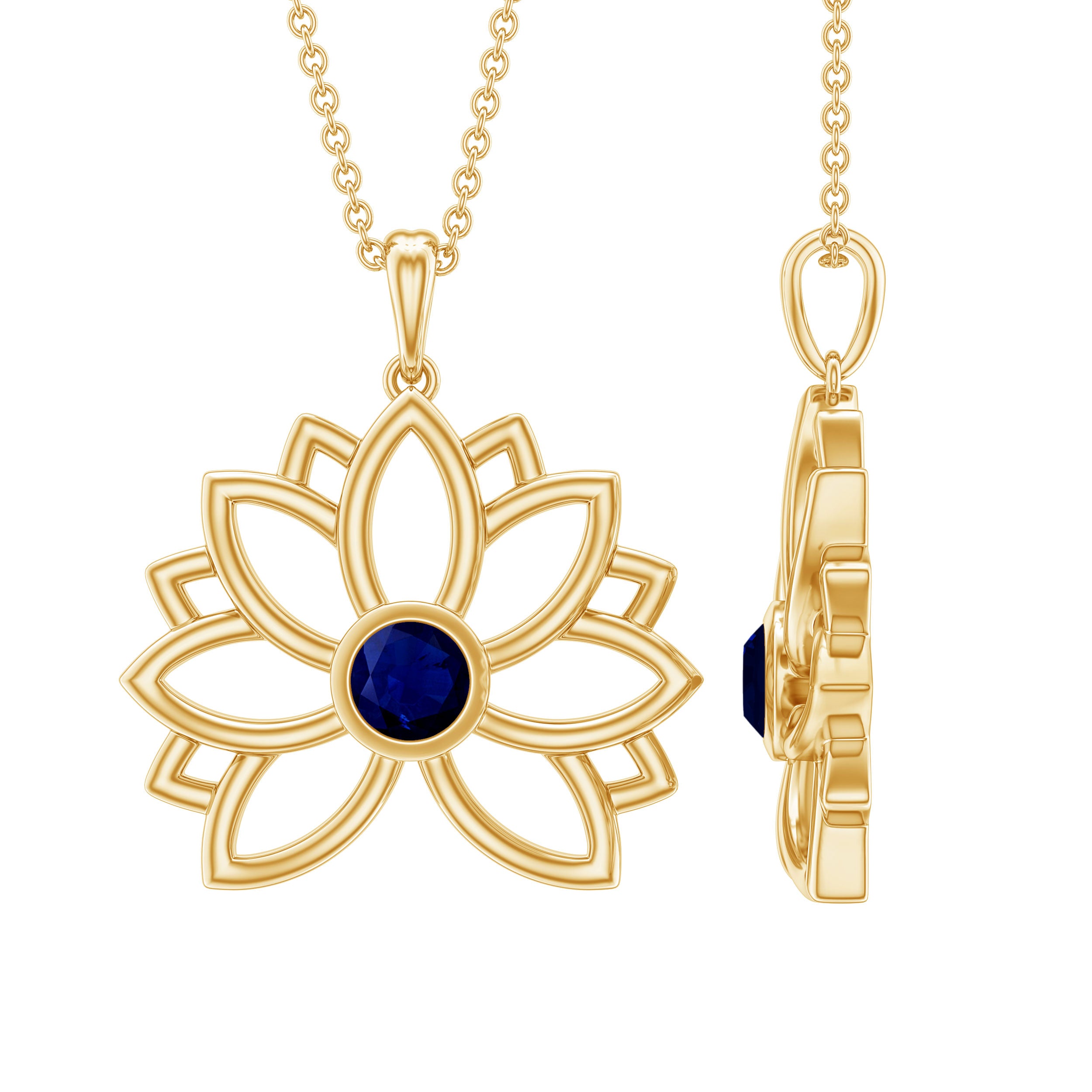All About Blue Sapphire: Types, Colors, Description, Origins & Details
Isn’t blue sapphire a favorite of the majority of us in the Sapphire lot?
Its royal velvety blue color carries that enchanting charm along with it which makes it so irresistible. Nothing matches the intensity and vividness of blue color in blue sapphire, that’s for sure. And the popularity of Blue Sapphire is here to stay forever since blue is such a classic. That sets the stage for our curiosity to know everything under the roof about this royal September birthstone. And to facilitate you with just that, our Blue Sapphire education guide is here to address all the basic knowledge revolving around sapphire right from the history and beliefs to the famous 4 C’s of Sapphire and properties to helo you make a prudent decision while setting out to buy blue sapphire jewelry.
Properties of Blue Sapphire
Hardness
Do you know why is it such a durable choice to embellish our jewelry with? Well because, having a hardness of 9 out of 10 on Moh’ scale, it has absolutely no cleavage and is hailed as one of the toughest gemstones the world has ever witnessed. It can withstand the wear and tear of regular use with much ease.
Luster
Or shall we say what makes this gemstone so alluring! It has a a vitreous luster, i.e., a glass like luster along with a refractive index of 1.762-1.778. Got an idea why it looks so graceful?
Composition
Belonging to the corundum family, Blue Sapphire is known to be composed of aluminum oxide and has a color ranging from light to deep blue. The deep saturation of blue sapphire is all thanks to the presence of iron and titanium.
Origin & History
Belonging to the corundum family, Blue Sapphire is known to be composed of aluminum oxide and has a color ranging from light to deep blue. The deep saturation of blue sapphire is all thanks to the presence of iron and titanium.
Where is Blue Sapphire found?
The craze for this precious gemstone Blue Sapphire is such that it is known to be discovered in a number of different places ranging from India, Myanmmar, Thailand, Sri Lanka and Australia, Afghanistan, Madagascar, Tanzania, Nigeria, Vietnam and Malawi, Cambodia, China and Cameroon. Although Sri Lanka would always be the first and leading producer of this royal blue beauty. Talking about its specific formation, the purest of all sapphires are known to be formed during the transformation of igneous rocks under intense temperatures. It is usually formed in corundum mineral and it gets its velvety blue color thanks to the presence of titanium.
Natural Blue Sapphire versus Lab Created Blue Sapphire
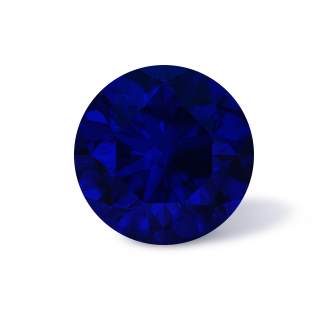
Natural Blue Sapphire
A natural blue sapphire, just how its name suggests, comes straight from the mines of the earth deep in igneous rocks. Thus, it is known to range from violet-blue to greenish-blue. It is more prone to inclusions, blemishes and color zoning since it comes straight from the mines.
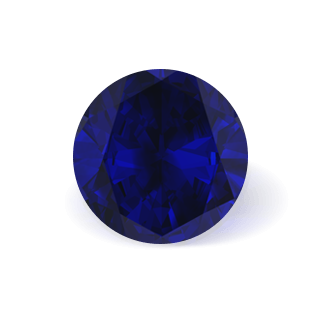
Lab Created Blue Sapphire
A lab-created blue sapphire, again just like its name, is created by men in a similar environment. Having the same properties, a lab created blue sapphire is known to be more eye clean. Interestingly, it is known to be pure blue devoid of any other tints.
Blue Sapphire Quality and Price Filters
Of course, the most integral part. As much as we love adoring the beauty of this royal gemstone, isn’t having a look at its prominent 4 Cs that dominate its quality equally important? Would only help us judge our gemstone better. Let’s take a glance with our Sapphire education guide:
Color
For Blue Sapphire, the intensity of its Blue Color is the primary driver of its value. General rule of thumb states that as the saturation of color increases, its value increases. However, in case of sapphire it is observed that, a very light blue and an over saturated/opaque blue color would command a similar substantially lower price. Let’s give you a glance:
- Intense Blue: The deepest, most royal and the most enriching velvety blue out of the lot! Having a color saturation ranging betwen 80-90 %, this color is doubtlessly the most sought after.
- Vivid Blue: Having a slightly lighter color than the one mentioned above, blue sapphire belonging to this category is also pretty deep and vibrant and possesses a color saturation between 60-80%.
- Deep Blue: The September birthstone belonging to this category has a slightly light saturation ranging between 30-60 %.
- Medium Blue: The September birthstone belonging to this category has a slightly light saturation ranging between 30-60 %.
- Sky Blue: Probably one of the most lightest colors of blue sapphire with a color saturation of 5-30 % only.
- Navy Blue: Having a slight over saturation and being opaque, blue sapphire belonging to this category is pretty less in value.
Clarity
Colored gemstones, unlike Diamonds, don’t have a standardized system in place for measuring the quality and it is very rare to find a sapphire with no eye visible imperfections. Yet Blue Sapphires with small internal inclusions are also valuable considering the fact that such inclusions do not cause hindrance in its color or reduce the brilliance and elegance of the gem. Various inclusions are found in Blue Sapphires and most dominant being the long thin inclusions known as needles also called as Silk when they occur as mineral rutile. Some other clarity factors include mineral crystals, partial breaks, color zoning and color banding.
Carat
The carat weight of blue sapphire, having a direct impact on its price, is known to range between 0.01 to 2 CT.
Cut
The cut for Blue Sapphire is determined by the desired color of the gemstone. The darker stone is cut shallower for more light to go through the gem and offered a deep cut for a lighter shade to help the stone retain more light and increase the saturation.Cutting a Sapphire requires years of experience and depending upon the brilliance, carat, inclusions and color, a skilled cutter determines the type of cut to be offered a Blue Sapphire.
Blue Sapphire Grading Value
Here we arrive to the same old grading system! Want to analyze the quality of your favorite September birthstone better? Have a look at its different categories and judge for yourself how the entire procedure gets a lot more easier with out blue sapphire buying guide:
AAAAA (Untreated Heirloom)
Being extremely rare, blue sapphire belonging to this category are rich in color and is pretty famous for its eye clean to very slightly included clarity. That’s exactly why they’re so rare and thus valuable.
AAAA (Heirloom)
The top 1 % of Blue Sapphire belonging to this category are rich in velvety blue color and are known for possessing eye clean to slightly included clarity. What differentiates it is that they can be pretty heated.
AAA (Excellent)
The top 10 % of Blue Sapphire belonging to this category have a color ranging from medium to vivid blue and these are also quite sought after, thanks to its very slightly included to slightly included clarity.
AA (Very Good)
The top 25 % of Blue Sapphire belonging to this category are known for their being medium to light blue in color along with a moderate to slightly included clarity.
A (Good)
Most of the blue sapphire fall into this category which is pretty common though less in value. The top 50 to 75 % of Blue Sapphire belonging to this category possess a very light blue color. It is almost opaque infact and have an included clarity as well.
Benefits of Blue Sapphire
Appearance kept aside, what other things do you consider in a gemstone? We’re sure astrological benefits could be one of them. Blue Sapphire, symbolizing hope
Physical Healing
Blue Sapphire, having ties with throat chakra, is known to help in dealing with throat problems. Apart from that, it can also enhance the eyesight of the wearer, help with hearing problems, inflammation and bleeding as well. It can help clean the toxins out of the body and maintain the overall health.
Emotional Healing
Probably one of the best gemstones when it comes to emotional healing. This September birthstone is known to balance the physical, spiritual and mental being of the wearer, thus bringing serenity to the life of the wearer. It is even known to bring balance, peace and stability, keeping the wearer away from all kinds of negative energies.
Materialistic Properties
Did you know Blue Sapphire has long been hailed as the stone of prosperity? It is believed since ancient times to bless the wearer with wealth and success.
Frequently Asked Questions
How is a blue sapphire formed?
Blue sapphires are formed in nature during igneous rock transformation. The corundum and titanium present in igneous rock, upon cooling can lead to large crystal formation. The size of sapphire depends upon the rate of cooling of magma.
What is difference between lab grown and natural blue sapphires?
Like most of the gemstones, there is an option to choose between natural and lab-created Blue Sapphires. One must not confuse “lab grown” with the “fake”. While synthetic is a replica the lab grown is developed in a controlled lab environment.
Sapphires whether natural or lab grown are made from corundum and hence lab grown sapphires are indistinguishable from the natural ones by hardness and physical properties.
Where do Blue Sapphires come from?
Blue Sapphire come from a few specific locations in the world and they being Myanmar, Sri Lanka and Madagascar.
How to take care of blue sapphire jewelry?
Blue Sapphire Jewelry is quite easy to clean due to their hardness and durability. However, a few things must be kept in mind like avoiding contact of the gemstone with make-up, harsh chemicals, abrasives.
While cleaning the jewelry take use of lukewarm water and mild cleaning detergent. Soft toothbrush can be used to clean the underside of the sapphire.ss
Also, the jewelry must be individually kept to avoid contact with other jewelry to avoid unnecessary scratches.
What is a Blue Sapphire certification?
The most common Blue Sapphire Certifications includes from GIA, IGS and HRD labs. It is usually a document you receive on the behalf of the aforementioned 3rd party labs which describes a sapphire in all of its characteristics.
Each and every party’s defining grounds may defer.
What is the birthstone of Blue Sapphire?
Blue Sapphire, a precious gemstone, is known to be the birthstone of September, making it extra lucky for all the September babies out there.
What is special about Blue Sapphire?
Blue Sapphires are believed to be one of the rarest and durable gemstone. Known for their exceptional beauty, rarity, and symbolism.
Can Sapphire be worn daily?
Absolutely yes! In fact, it is one of the most durable and toughest gemstones with a rating of 9 out of 10 on Moh’s scale. It is only surpassed by diamond when it comes to hardness and that’s exactly why it can withstand the wear and tear of regular use with much ease.
Conclusion
Blue Sapphire: a gemstone having heavenly ties thanks to royal velvet blue beauty. Nothing can ever come close to the craze that this precious blue gemstone has enjoyed since time immemorial. And we’re sure that’s exactly what would have brought you here as well. The rich history and royal appearance of this September birthstone gets us curious to get to know it even better. And that’s exactly what our Blue Sapphire education guide has come to facilitate you with, informing you right from the history and properties to the famous 4 Cs and beliefs. We hope you had your share of fun and are more well versed with this popular gemstone with our blue sapphire buying guide . That being said, here we sign off wishing you all the luck in selecting your favorite blue sapphire jewelry.


